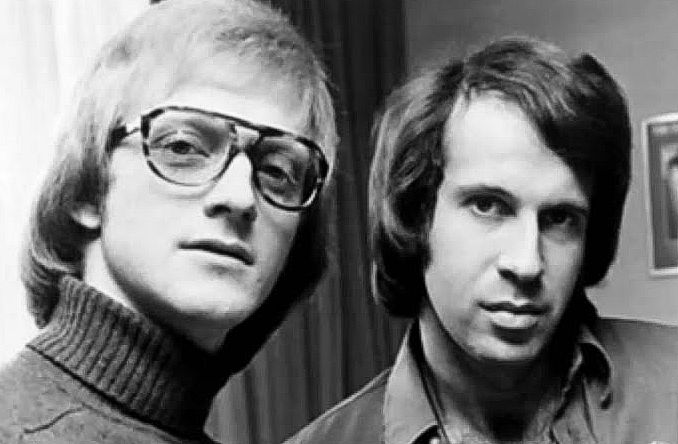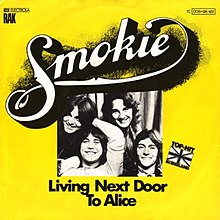
For those of us to whom amassing our own personal collection of 45s was the teenage pursuit of the 1970s, the Chinnichap moniker always served to lend the latest 7-inch vinyl cut the ultimate seal of authenticity. Whether it came packaged in the stark orange of RCA Records or the pale blue colours of RAK, complete with its familiar and oddly serene approaching yacht across an azure background of sea and sky, we could be confident that this indeed was fifty pence worth of real pop.
Songwriters Nicky Chinn and Mike Chapman were an institution, a veritable conveyor belt of hits, during the age of glam. After having announced their arrival on the scene through the successful pre-glam pop act New World, the Chinn-Chapman partnership soon found itself at the vanguard of the revolution as it launched a determined three-pronged attack upon the singles charts with its simultaneous stewardship of The Sweet, Mud and Suzi Quatro. In all probability the duo were the most prolific purveyors of hit singles, at the very least during the earlier part of the 1970s.
Burgeoning glam scene
English-American Chinn and Australian-American Chapman came together in 1970 and quickly teamed up with Herman’s Hermits producer Mickie Most’s RAK record label in preparation for their assault upon the burgeoning glam scene. Along with Slade, The Sweet was probably the most successful of the chart bands around that time. Its biggest UK hits – Blockbuster, Hell Raiser, Ballroom Blitz and Teenage Rampage – each sold in excess of a million copies. At around the same time leather-clad rock chic Suzi Quatro was ploughing her own furrow as the only major female act to gatecrash a genre which had proved peculiarly, if paradoxically, successful at emphasising its essential masculinity through ever more shocking arrays of eyeliner, lipstick, high heels and hair. If Mud’s Les Gray, with his exaggeratedly macho Teddy Boy persona and Presleyesque voice, bucked the trend, he was undermined a tad by his superbly talented lead guitarist Rob Davis, whose perm and chandelier earrings ensured the band retained at least one foot in the camp of glam.
An ephemeral enthusiasm

Alas, music and fashion endure no permanence, and the relentlessness with which glam aspired consistently to new levels of self-parody meant it was inevitably destined to be remembered by history as an ephemeral enthusiasm, even though it endures eternally in the hearts of many. When the later 1970s saw it replaced by a more staid and traditional type of act, Chinn and Chapman were already waiting in the wings with acts such as Racey and Smokie. Ironically the latter’s biggest hit was to become Living Next Door to Alice, first recorded by Chinnichap outfit New World back in 1972, when it all began. The original Smokie version reached No.5 in the UK singles charts in 1976, but a more risqué interpretation featuring the band alongside blue comedian Roy “Chubby” Brown was even more successful when in was recorded in 1995.
Nicky Chinn and Mike Chapman had long parted company by the time the immortal words “Who the f**k is Alice?” were reverberating around drinking clubs the length and breadth of the country. But their legacy will always remain. The question “Who the f**k were Chinn and Chapman?” is unlikely ever to be asked by anyone who was a teenager during that glorious, if rather too brief, period of British musical and cultural history.

If you enjoyed reading this article, make sure you stay updated with all Phil’s latest blog posts by signing up to receive his free Newsletter. You can unsubscribe at any time and your details will never be shared with any third party. Click here to sign up today.